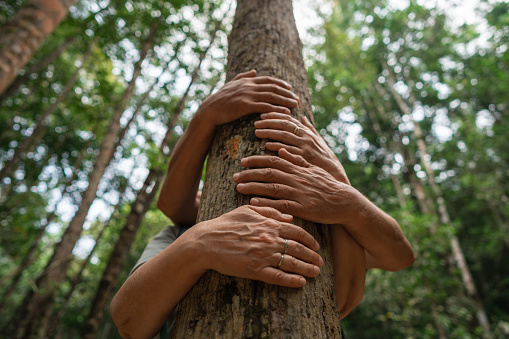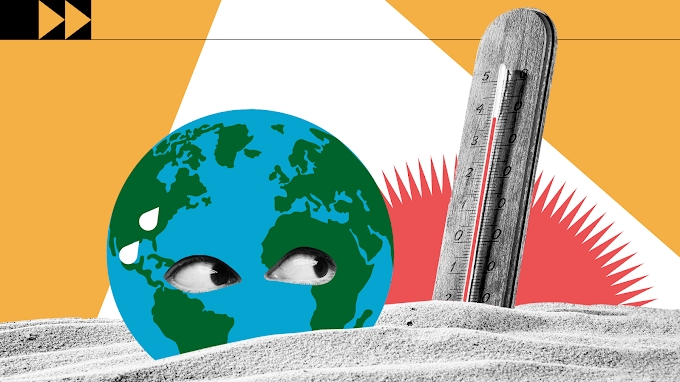In today's world, the concept of sustainable development has become increasingly important. Sustainable development is defined as the way of meeting the needs of the present without compromising the ability of the future generation to meet their own needs. This means balancing economic, social, and environmental concerns in decision-making processes.
Sustainable development is about finding the sweet spot between economic development, social equity, and environmental protection.
At the heart of sustainable development is the environment. The environment provides us with the natural resources we need to survive, and it is our responsibility to protect and preserve these resources for future generations.
Sustainable development seeks to ensure that we use the environment's resources in a way that does not deplete them or cause long-term damage. It also aims to mitigate the negative impacts of human activities on the environment.
The Challenge of Climate Change
One of the most significant challenges facing us today is climate change. The burning of fossil fuels, deforestation, and other human activities are causing the Earth's temperature to rise at an alarming rate which is leading to more frequent and severe weather events, rising sea levels, and other negative impacts on our environment. To address this challenge, we must take a comprehensive approach to reach sustainable development. Some of them can be:
1. Investing in Renewable Energy
Investing in renewable energy is one of the most important steps we can take to mitigate the negative impacts of climate change. Renewable energy sources such as solar, wind, and hydropower can provide us with clean, reliable energy without contributing to greenhouse gas emissions.
Sweden, Norway, and Denmark are the top three countries leading in renewable energy. Norway, in particular, has been generating power from rivers and waterfalls since the late 1800s, and as of 2016, 98% of its electricity production came from renewables, mainly hydropower. Morocco has also developed renewable energy projects that contribute almost 40% of its installed energy capacity, and it aims to exceed 50% by 2030.
2. Promoting Energy Efficiency
Another important aspect of sustainable development is promoting energy efficiency. This means using energy in a way that maximizes its benefits while minimizing its negative impacts. For example, businesses can invest in energy-efficient technologies such as LED lighting or high-efficiency HVAC systems.
The HVAC system was developed by Willis Carrier, an American engineer in 1902. He invented the modern air conditioning system while working on a solution to control humidity in a Brooklyn printing plant.
3. Protecting Natural Habitats
Protecting our forests and other natural habitats is essential for sustainable development. These habitats provide vital ecosystem services such as clean air and water, wildlife habitat, and carbon sink.
4. Sustainable Agriculture and Food Systems
Sustainable agriculture and food systems are also critical components of sustainable development. These systems prioritize environmental protection, social equity, and economic development in food production and distribution. Sustainable agriculture practices include minimizing pesticide and fertilizer use, reducing waste, and promoting local food systems.
According to the Food and Agriculture Organization (FAO), sustainable agriculture is defined as
An integrated system of plant and animal production practices having a site-specific application that will over the long-term satisfy human food and fiber needs; enhance environmental quality and the natural resource base upon which the agriculture economy depends; make the most efficient use of nonrenewable resources and on-farm resources and integrate, where appropriate, natural biological cycles and controls; sustain the economic viability of farm operations; and enhance the quality of life for farmers and society as a whole.
While many countries are working towards sustainable agriculture practices, only a few have been recognized for their efforts like France is the only European country that is self-sufficient in food production, and it is recognized for its sustainable agriculture practices.
Other countries that practice sustainable agriculture include Canada, Australia, Russia, India, Argentina, Burma, Thailand, the U.S., and a few small others.
5. Social Equity
Another critical aspect of sustainable development is social equity. This means ensuring that everyone has access to basic human rights, including education, healthcare, and economic opportunity. It also means ensuring that vulnerable populations, such as women and children, are protected from harm and have a voice in decision-making processes. Achieving social equity is essential for building a sustainable future that benefits everyone.
6. Working Together as a Global Community
To achieve sustainable development, we must work together as a global community. Governments, businesses, and individuals all have a role to play in building a sustainable future. We must prioritize sustainable development in our policies and practices.
In conclusion, building a sustainable future requires a balance of economic, social, and environmental concerns. It requires us to be mindful of our impact on the environment, while also promoting social equity and economic opportunity.













